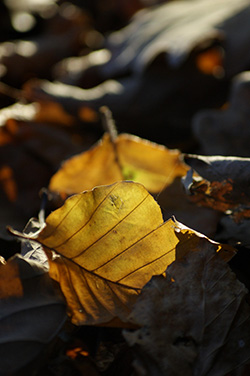Are Leaves Headed for a Fall: What Leads Up to the Color Change
Are Leaves Headed for a Fall: What Leads Up to the Color Change

By Bill Willis and Bill Steinmetz
November 8, 2016
According to the traditional calendar, school has resumed and holidays are just around the corner. With historically high temperatures expected well into November, what does that mean for vivid autumn and fall leaf colors here in the Triangle?
As The Leaves Turn
The timing of color change is controlled by the length of the night. As the length of darkness increases, the production of green pigment (chlorophyll) decreases. Other pigments, like the yellows and oranges are hidden by the chlorophyll during the growing season. As the amount of green decreases, the yellows and orange become more evident. The red pigment is manufactured under conditions of abundant sunlight and cool temperatures.
As this process continues, a leaf abscission layer forms between the leaf stem and the twig where the leaf will detach from the tree. If a freeze stops the abscission layer growth, the leaf may not change color, but turn brown and remain on the tree. The browns seen in leaves are usually the result of tannin buildup.
The North Carolina leaf change begins at the higher elevations in the mountains in mid to late September and proceeds southeastward through the Piedmont by November. This timing is fairly exact for any particular location from year to year. The first leaves to turn and fall are the tulip poplars, ash and buckeye trees, followed by other deciduous trees like maples and shrubs like sumacs.
Colors in the Wind
When it comes to color, there are multiple environmental factors that contribute to vibrant reds, yellows, and oranges in leaf colors, including:
- light cycle length
- day and night temperature
- sunlight intensity
- available soil moisture
- actual amount of leaf pigment
- available nutrients
- wind and rain
A growing season with ample moisture that is followed by a rather dry, cool, sunny autumn with warm days and cool but frost free nights provides the best conditions for the brightest fall leaf colors. Wind and rain in the autumn can shorten the display, as the leaves can fall from the trees before they develop their full color potential.



